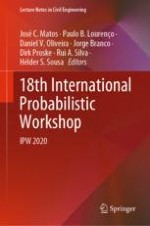2021 | OriginalPaper | Buchkapitel
Stochastic Simulation of Clay Brick Masonry Walls with Spatially Variable Material Properties
verfasst von : Dominik Müller, Tilo Proske, Carl-Alexander Graubner
Erschienen in: 18th International Probabilistic Workshop
Aktivieren Sie unsere intelligente Suche, um passende Fachinhalte oder Patente zu finden.
Wählen Sie Textabschnitte aus um mit Künstlicher Intelligenz passenden Patente zu finden. powered by
Markieren Sie Textabschnitte, um KI-gestützt weitere passende Inhalte zu finden. powered by
